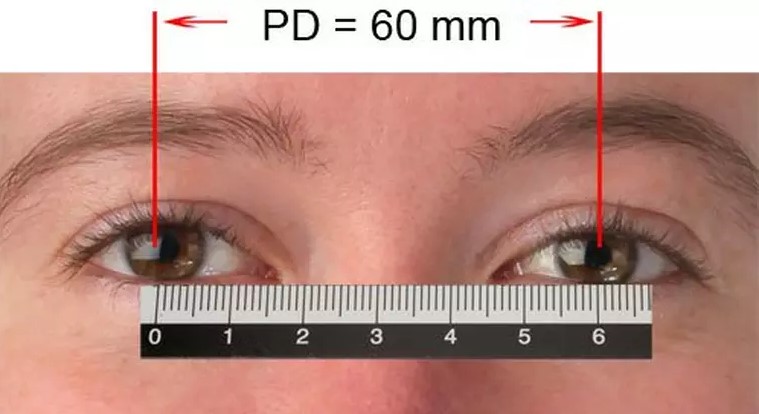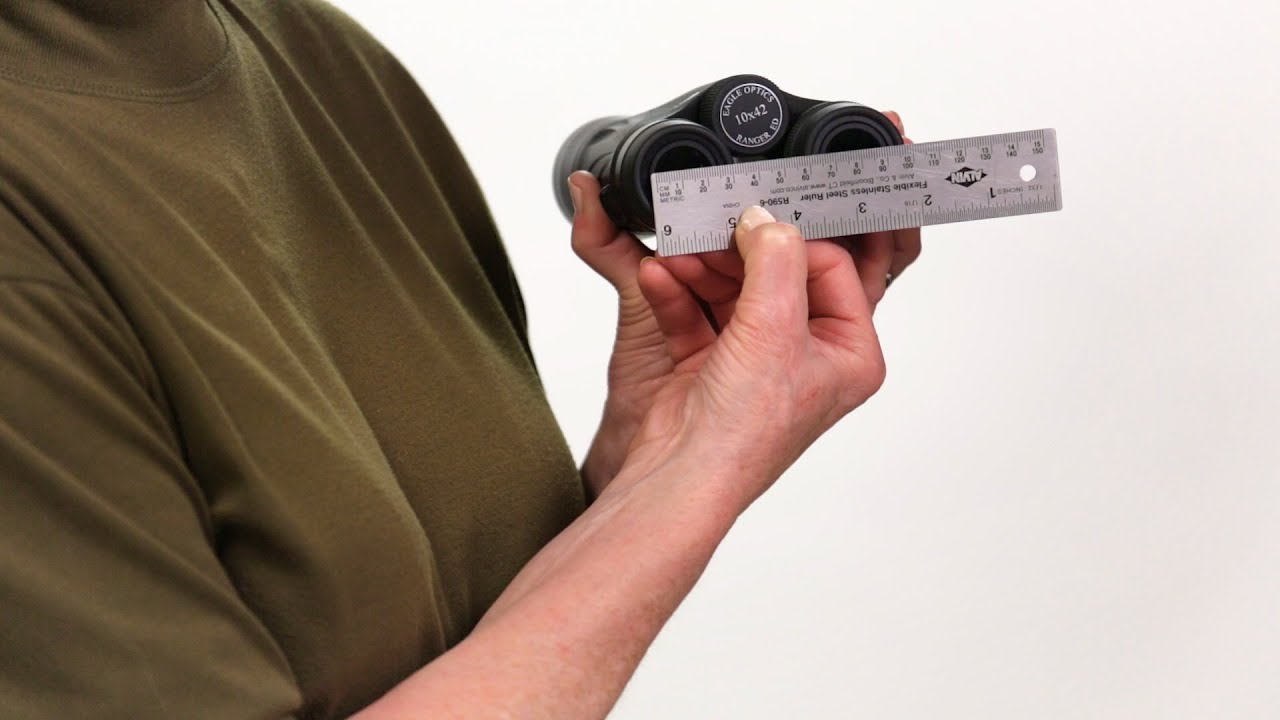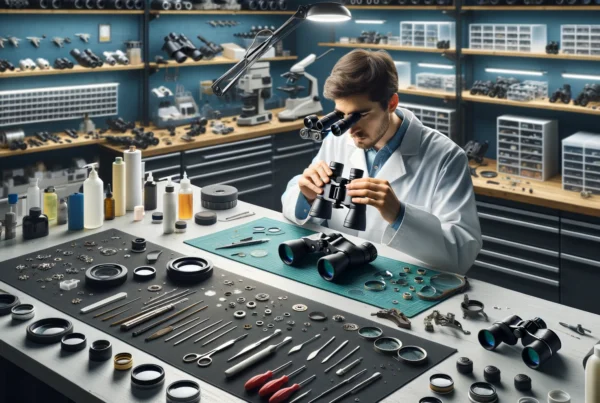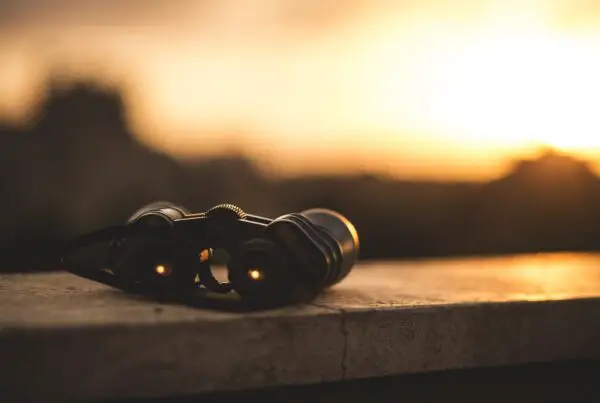Contents
- What is Interpupillary Distance (IPD)?
- How to Measure IPD
- IPD Adjustment in Binoculars
- Importance of Correct IPD in Binoculars
- The Impact of Correct IPD in Binocular Use
- Factors Affecting IPD and Its Measurement
- Adjustable vs. Fixed IPD Binoculars
- The Importance of Trying Before Buying
- IPD and Visual Comfort
- Specialty Binoculars for Specific IPD Requirements
- Frequently Asked Questions (FAQ’s)
- Bottom Line
When it comes to observing distant objects, binoculars are the ultimate tool for providing a closer and more detailed view. These optical wonders have been a companion to adventurers, nature enthusiasts, sports spectators, and stargazers alike for centuries.
Interpupillary distance (IPD) is the distance between the centers of each pupil. It is important to understand IPD when using binoculars because it affects the quality of the image you see.
The binoculars’ lenses may not line up perfectly with your pupils, resulting in a dark halo around the image and only seeing a small part of the scene.
What is Interpupillary Distance (IPD)?
Interpupillary Distance, commonly referred to as IPD, is the measurement of the distance between the centers of the pupils in your eyes. It is a unique and individual characteristic, just like your fingerprint.
The IPD value is expressed in millimeters (mm) and plays a critical role in using binoculars effectively. These optical instruments are designed to mimic the way our eyes see the world, allowing us to observe distant objects with both eyes simultaneously.
For this alignment to happen seamlessly, the IPD of the binoculars must match your unique IPD.
How to Measure IPD
There are several ways to measure IPD. One way is to visit an optometrist or an optical shop, where they can measure your IPD using a pupillometer. Another way is to measure it yourself using a ruler with millimeter units.
Stand about 8 inches from a mirror, and hold the ruler straight across your eyebrows. Close your right eye, and make sure the zero millimeter mark is exactly above the center of your left pupil. Then, open your right eye and look into the mirror to read the measurement from the ruler.
IPD Adjustment in Binoculars
Most binoculars have some sort of way to cater for differences in IPD. Most use a hinge mechanism that allows you to adjust the distance between the ocular lenses.
Some binoculars also have a diopter adjustment, which allows you to adjust the focus of each ocular lens independently to compensate for differences in vision between your left and right eyes.
Importance of Correct IPD in Binoculars
Correctly set IPD enables the user to see only one image with sharp edges. If the IPD is not set correctly, you may experience eye strain, headaches, distorted vision, double vision, blurred vision, and/or an inability to wear your eyeglasses.
The Impact of Correct IPD in Binocular Use
Imagine using a pair of binoculars without adjusting the IPD to fit your eyes. The result would be a less-than-optimal viewing experience. Incorrect IPD settings can lead to double vision, discomfort, and even headaches.
The optical axes of the binoculars need to align precisely with your pupils, creating a single, merged image that feels natural and three-dimensional. This synchronization between the binoculars and your eyes allows for a clearer, more immersive, and comfortable viewing experience.
Factors Affecting IPD and Its Measurement
IPD can vary among individuals due to various factors, including age, genetics, and ethnicity. Children typically have narrower IPDs than adults, and people from different ethnic backgrounds may have slight variations in their IPD measurements.

Optometrists usually measure IPD during eye examinations, but you can also measure it at home using simple methods.
One common way to measure your IPD at home is the mirror method:
- Stand in front of a mirror with your eyes level and look directly at your reflection.
- Use a ruler or a piece of paper with marked points to measure the distance between the centers of your pupils.
- This measurement represents your IPD.
- Alternatively, some binocular manufacturers provide IPD measurement tools that help you determine your IPD accurately.
Adjustable vs. Fixed IPD Binoculars
To accommodate different users, many binocular models come with adjustable IPD mechanisms. These mechanisms allow you to customize the binoculars to fit your unique IPD measurement precisely.
Adjustable IPD binoculars are ideal for sharing among family members or friends, as each person can easily set the IPD to their preference. On the other hand, some binoculars have a fixed IPD, making them suitable for individuals with a constant IPD.
The Importance of Trying Before Buying
Investing in a pair of binoculars is an investment in your viewing pleasure and outdoor experiences. It is essential to try binoculars before making a purchase.
By testing them, you can experience firsthand how the IPD adjustment works and how comfortable they feel. Trying the binoculars also helps you ensure that they suit your unique IPD measurement, providing you with a pleasant and satisfying viewing experience.
IPD and Visual Comfort
Proper IPD alignment not only enhances the clarity of the observed image, but also significantly reduces eye strain and fatigue during extended use.
By eliminating the discomfort caused by misaligned binoculars, you can focus more on your observation and immerse yourself in the beauty of nature without distractions.
Specialty Binoculars for Specific IPD Requirements
Manufacturers have developed specialty binoculars tailored to specific IPD requirements.
For example, there are binocular models designed for children, individuals with narrow IPDs, or those who prefer compact designs. These specialized binoculars ensure a comfortable fit and an optimal viewing experience for their intended users.
Frequently Asked Questions (FAQ’s)
Here are some frequently asked questions (FAQs) and answers about using an air fryer for the first time:
What is Interpupillary Distance (IPD)?
Interpupillary Distance (IPD) is the measurement of the distance between the centers of the pupils in your eyes. It is a unique and individual characteristic, typically expressed in millimeters (mm).
Why is IPD important in using binoculars?
IPD is crucial in using binoculars because it ensures that the optical axes of the binoculars align perfectly with your pupils, providing a comfortable and immersive viewing experience with a clear and merged image.
How does incorrect IPD adjustment affect binocular use?
Incorrect IPD adjustment can result in a distorted and uncomfortable view. It may cause double vision, eye strain, headaches, and reduce the clarity and quality of the observed image.
How do I measure my IPD at home?
To measure your IPD at home, stand in front of a mirror with your eyes level and look directly at your reflection. Use a ruler or a piece of paper with marked points to measure the distance between the centers of your pupils. This measurement represents your IPD.
Can IPD vary among different individuals?
Yes, IPD can vary among individuals due to factors such as age, genetics, and ethnicity. Children generally have narrower IPDs than adults, and people from different ethnic backgrounds may have slight variations in their IPD measurements.
What should I do if I have a different IPD measurement from someone else sharing the binoculars?
If you are sharing binoculars with someone who has a different IPD measurement, look for binoculars with adjustable IPD mechanisms. This allows each user to customize the binoculars to fit their unique IPD, ensuring a comfortable viewing experience for everyone.
Can I use binoculars with a fixed IPD if my IPD is different?
It is not recommended to use binoculars with a fixed IPD that does not match your own IPD. Using binoculars with incorrect IPD settings can cause discomfort, eye strain, and reduce the quality of your observation.
How can I adjust the IPD on my binoculars?
Most binoculars come with a central hinge that allows you to adjust the distance between the barrels. Look through the binoculars and use the central hinge to adjust the IPD until you see a single, merged image with a clear and sharp view.
Why is it essential to try binoculars before buying?
Trying binoculars before buying allows you to experience how the IPD adjustment works and how comfortable they feel. It ensures that the binoculars fit your unique IPD measurement, providing a pleasant and satisfying viewing experience.
Are there specialized binoculars for people with narrow or wider IPD measurements?
Yes, some binocular models are designed to cater to specific IPD requirements. There are binoculars for children, individuals with narrow IPDs, and those who prefer compact designs. These specialized binoculars ensure a comfortable fit and optimal viewing experience for their intended users.
Bottom Line
It is important to measure your IPD correctly and adjust the binoculars accordingly to avoid eye strain and other vision problems. When buying binoculars, it is recommended to check the minimum and maximum IPD of the binoculars you are interested in to see if the distance fits your needs.

A Binoculars enthusiast, who love exploring skies and watching birds. It is my hobby to collect Binoculars of different kinds and try to explore the world through various lenses. This is all I do to explore happiness by magnifying my beautiful world.




